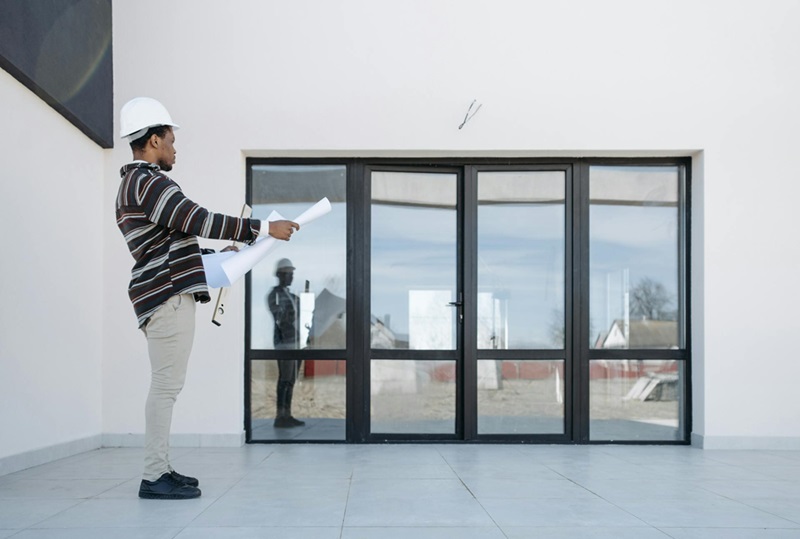A Homeowner’s Survival Manual to Major Post-Construction Hurdles

Starting a home building project is generally characterized as a huge task that is expensive and full of obstacles. However, the possibility of building a haven that fulfills one’s goals and wishes is an enormous motivation that propels a great number of people to take on this tough endeavor. But the completion of building doesn’t mean the end; rather, it heralds a new chapter with its own special set of challenges.
Once the architectural plans are translated into the actual material, there is a world of post-construction obstacles that homeowners have to overcome. Let’s explore the sometimes disregarded facets of post-construction homeownership in order to provide insight into the facts that lie ahead after the building process.
Below is a homeowner’s survival manual to major construction hurdles. Read on, and be enlightened.
1 – Irregularities and Quality Issues
Even with meticulous design and building, problems with quality or faults can occasionally surface after the project is finished. Even with deluxe homes crafted by pros, these can happen. This could involve problems with the components, the craftsmanship, or the plumbing or electrical systems.
There could be intrinsic flaws in building materials that are not instantly apparent while the structure is being founded. For instance, a collection of defective plumbing fittings or wiring may eventually cause problems like leaks or electrical breakdowns.
During construction, human mistakes can happen even with competent workers. This could involve shoddy finishing work, lack of insulation or sealing, or incorrect component installation. Even while these mistakes might not show up right away, they could eventually trigger problems like water ingress, structural deficiencies, or cosmetic faults.
At times during the building process, poor quality control might consequence in missed flaws or substandard workmanship. This could happen as an effect of hurried time frames, inadequate regulation, or careless subcontractors. If strict quality control procedures aren’t followed, these glitches might not be discovered until after the project is over.
Work with seasoned and reliable custom home builders or luxury home builders to better avoid any or any serious post-building issue.
2 – Settling Periods
There is a settling period for newly built buildings as the materials become acclimated to their surroundings. Small structural movements brought on by this settling may result in foundation, wall, or ceiling fissures. Furthermore, variations in temperature and humidity can cause materials like wood to shrink or expand, which might bring about problems with windows, doors, or flooring.
3 – Warranty Claims
Manufacturers’ or builders’ warranties tend to come with new residences. It can take a while to handle warranty claims for any errors or malfunctions.
Typically, submitting a warranty claim is getting in touch with the manufacturer or builder, outlining the problem, and asking for a fix. Numerous back-and-forth exchanges of information are frequently necessary during this procedure between the homeowner, the warranty provider, and any pertinent professionals or contractors. Scheduling appointments for maintenance, replacements, or inspections can add time to the process—especially if there are several people involved.
There may be times when the homeowner and the warranty provider disagree about the veracity of a claim or the best course of action. This examination procedure may take many days or even weeks to finish, depending on the intricacy of the problem and the resources available.
4 – Repair and Maintenance
Sometimes the construction process is not completed or specific duties are not completed. In one instance, there may still be unfinished landscaping, last-minute finishing touches, or final inspections, which exposes the house to hazards that need to be fixed after construction.
A home needs regular maintenance to stay in good condition. Unanticipated maintenance or repairs may need to be undertaken right after following construction, which could present homeowners with unexpected and unknown difficulties and costs. All of these maintenance and repair jobs cost money and take time.
5 – Unexpected Environmental Factors
Natural catastrophes, climate change, or environmental conditions might provide problems for properties, such as storms, wildfires, or flooding, necessitating repairs or additional precautions.
Homes and other properties may sustain significant damage as a result of natural disasters such hurricanes, earthquakes, floods, wildfires, tornadoes, and storms. The frequency and intensity of extreme weather events have been rising due to climate change, which augments the risk of natural disasters. Elevated ocean levels heighten the probability of flooding of coastlines and erosion, whilst warmer temperatures may exacerbate heatwaves and droughts. These alterations can call for more precautions to shield homes from dangers associated with climate change.
Residences in regions where threats to the environment like sinkholes, landslides, or contaminated soil are common may encounter particular difficulties. Local ecosystems and biodiversity may suffer as an impact of home development and construction. Deforestation, wildlife corridor disruption, and natural habitat loss can all lead to ecological imbalances and a decline in biodiversity. To lessen the harm they cause and assist regional ecosystems, homeowners may need to take into account eco-friendly building materials, sustainable landscaping techniques, or habitat restoration initiatives.
6 – Financial Costs
Homeowners may still have to deal with unforeseen costs associated with homeownership, property taxes, and insurance premiums even after construction is completed.
Homeowner organizations or local governments can also levy special assessments or charges on homeowners for purposes like emergency services, community enhancements, or infrastructure maintenance. These assessments may be imposed suddenly and cause households to incur additional expenditures.
THE AFTERMATH
In order to effectively conquer these post-construction obstacles, prior planning, continuous maintenance, along with obtaining expert aid are necessary.
Careful budgeting, long-term planning, and proactive management of homeownership expenses are necessary to overcome all the financial demands of home building and of the post-construction too.